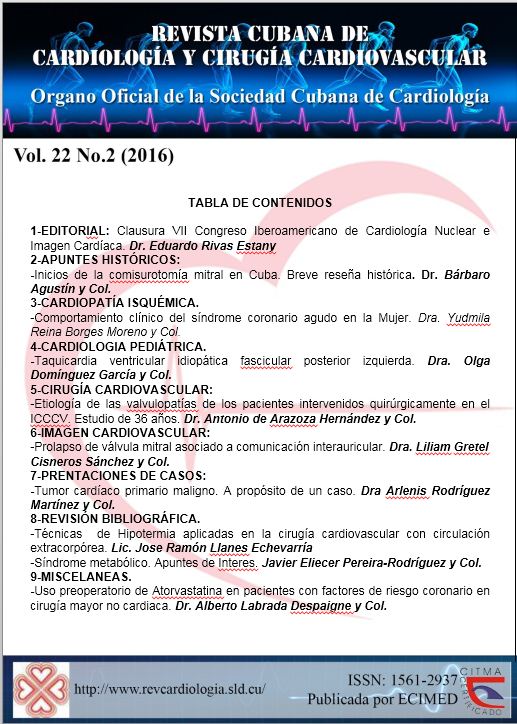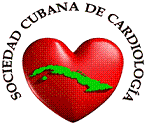Hypothermia techniques applied in cardiovascular surgery with cardiopulmonary bypass.
Keywords:
perfusión, hipotermia, circulación extracorpóreaAbstract
The techniques of hypothermia during application of extracorporeal circulation (ECC) in different treatments of cardiovascular surgery, depends on the complexity of the anatomy and pathophysiology of surgical correction, having assessed the aortic clamping time (TPA), with coronary flow interruption and subsequent ischaemia, age, weight and hemodynamic stability of the patient, ensuring optimal cerebral blood flow. To apply this technique it is necessary to establish rules to be followed by the surgical team, made up of the main surgeon, perfusionist and anesthesiologist, taking into account the degree of hemodilution, anesthetic technique, administration of neuroprotective drugs, heparinization, check systemic anticoagulation, administration of antagonists alpha adrenergic control electrolyte balance, blood glucose, lactate, diuretics and the method selected to ensure myocardial protection body cooling, either moderate or deep hypothermia.Generally valve surgery, myocardial revascularization, and some non-complex congenital diseases, are made normothermia or moderate hypothermia, while the technique of deep hypothermia, reserves for cardiovascular open-heart surgery at high risk such as: heart valve reoperations of poor prognosis, aortic aneurysm, severe atherosclerosis with calcification of the aorta, technique Bentell, significant bleeding during trans and postoperative and technical accidents during brain surgery requiring their implementation, in order to ensure myocardial protection and patient.
The aim of this review is to provide the perfusionist, the basic elements to select, implement and develop techniques ideal hypothermia in certain treatments of cardiovascular surgery with a high risk to the patient's progress and aims of reducing adverse clinical events resulting from malperfusion
Downloads
Published
How to Cite
Issue
Section
License
Aquellos autores/as que tengan publicaciones con esta revista, aceptan los términos siguientes:- Los autores/as conservarán sus derechos de autor y garantizarán a la revista el derecho de primera publicación de su obra, el cuál estará simultáneamente sujeto a la Attribution-NonCommercial 4.0 Internacional (CC BY-NC 4.0) que permite a terceros compartir la obra siempre que se indique su autor y su primera publicación esta revista. o admite fines comerciales. Permite copiar, distribuir e incluir el artículo en un trabajo colectivo (por ejemplo, una antología), siempre y cuando no exista una finalidad comercial, no se altere ni modifique el artículo y se cite apropiadamente el trabajo original. El Comité Editorial se reserva el derecho de introducir modificaciones de estilo y/o acotar los textos que lo precisen, comprometiéndose a respectar el contenido original.
- Los autores/as podrán adoptar otros acuerdos de licencia no exclusiva de distribución de la versión de la obra publicada (p. ej.: depositarla en un archivo telemático institucional o publicarla en un volumen monográfico) siempre que se indique la publicación inicial en esta revista.
- Se permite y recomienda a los autores/as difundir su obra a través de Internet (p. ej.: en archivos telemáticos institucionales o en su página web) antes y durante el proceso de envío, lo cual puede producir intercambios interesantes y aumentar las citas de la obra publicada. (Véase El efecto del acceso abierto).









